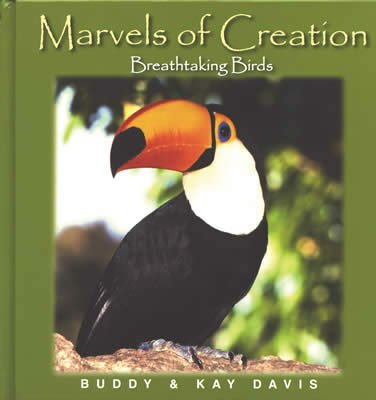Roadrunner
The roadrunner is the world’s fastest running-flying bird.

Nearly everyone has enjoyed the antics of the roadrunner and the coyote in comics and cartoons. In real life, the roadrunner looks a lot different, but it really is the world’s fastest running-flying bird. (The ostrich is the fastest non-flying bird.)
The roadrunner is a bird of prey and sometimes is referred to as the mongoose of the bird family for its ability to catch snakes, even venomous ones. This characteristic has placed the roadrunner in exaggerated folklore legends. The roadrunner’s diet consists of prey caught mainly on the ground such as insects, lizards, scorpions, small rodents, birds, and snakes.
The plumage of the roadrunner is brown streaked with white markings on the upper part and a dirty white underneath. The legs and beak are blue. They have a small crest on their head. Roadrunners have blue skin around the eye, which is broader at the rear. Its feet have two toes pointing forward and two pointing backward. Its long tail, which is as long as the rest of its body, is used as a rudder to help balance and steer the bird as it runs.
This particular bird can fly but is rather awkward because of its short wings. It was designed to run, and its speeds have been recorded as high as 26 mph (42 km/h). Fifteen mph (24 km/h) is generally the maximum, with the average being 10 mph (16 km/h). This amazing sprinter darts and scampers over rocks and sand taking 12 steps per second dodging between shrubs and cactus.
The roadrunner makes its home in southwestern North America and central Mexico in deserts which have shrubs. This ground-dwelling predator often seeks shade from the desert heat and becomes active as the day cools. Although the days are hot, the temperatures can drop very low at night. To compensate for the low temperatures, the roadrunner allows its temperature to drop slightly each night and goes into a state of torpor, which is similar to hibernation. In the morning as the sun rises, there is a special patch of dark-colored skin between the wings of the roadrunner that absorbs heat quickly, warming the skin and blood vessels. This helps the bird reach its normal temperature for the day.
The nest of the roadrunner is made of twigs in a shallow basket-like bowl found in brush or cactus, often as high as 17 feet (5 m) off the ground. The female lays two to nine white eggs and incubates them for about 18 days. At about 8 days they can walk and perch. In three weeks, the young are able to run and find their own food.
The roadrunner has few enemies but relies on its speed to escape them.
Roadrunner
Cuculiformes • Cuculidae • Geococcyx californianus
Weight: 18 ounces (500 g)
Length: 23 inches (58 cm)
Life Span: 14 years
Special Design Feature: The long tail of the
roadrunner is used for balance and as a rudder
for maneuvering as it darts after its prey.
Did You Know? The roadrunner has been recorded at speeds of up to 26
mph (42 km/h)—approximately 12 steps per second, making its legs a blur.
Marvels of Creation: Breathtaking Birds
This spectacular book brings the world of feathered creatures alive in a unique and colorful way.
Browse Kids Book- © 2024 Answers in Genesis
- Privacy Policy
- Contact
- About

